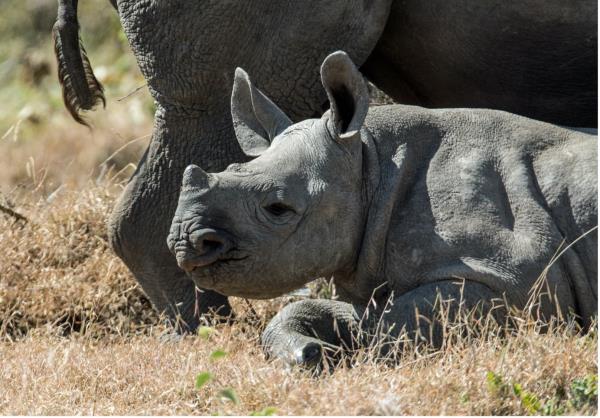08 February 2024

Northern Rangelands Trust (NRT) and Connected Conservation are safeguarding Kenya’s most vulnerable species and natural resources with Africa’s largest landscape-wide IoT conservation network.
The project is advancing wildlife and natural resource conservation using LoRaWAN IoT sensors and networks to collect, monitor and analyze real-time environmental data on a captivating scale. This data is coupled with analytics and conservation tools to help safeguard wildlife populations, promote peace, and empower community-led conservation.
NRT’s IoT conservation network was the first of its kind in Kenya and has been made possible by Connected Conservation Foundation (CCF), bringing together a coalition of private and public sector partners including NRT, Cisco, Actility, 51 Degrees, and EarthRanger.
Changing the conservation game
LoRaWAN IoT technology has emerged as a game-changing solution for natural reserves that require robust signal coverage over vast and hostile environments, which often have zero connectivity.
The technology allows battery-powered sensors to communicate via a long-range, ultra-low data rate connection, resulting in longer battery life. Additionally, LoRa sensors are a fraction of the cost compared to satellite-enabled solutions – transforming the way conservation programs operate.
The IoT network currently covers 22 of NRT’s community-led conservancies and four private reserves, (Lewa Wildlife Conservancy, Ol Jogi, Loisaba and Borana) with plans to bring more on board to increase coverage across the region. Over 190 new sensors have been deployed to all parks, with a further 250 scheduled.
“This IoT network is a game-changer for conservation efforts in Northern Kenya,” said NRT’s CEO, Tom Lalampaa. “We can now monitor our conservancies on a scale that was never possible. It is empowering our community-led conservancies to share, make decisions and collaborate in their conservation efforts.”
“This cross-conservancy, IoT conservation network is changing the way private and community-led conservancies work together,” said Sophie Maxwell, executive director of Connected Conservation Foundation. “Shared real-time information for large connected landscapes is helping secure threatened species, manage essential ecosystem services and benefit local communities.”
Data from the ranger, vehicle and wildlife sensors are helping rangers monitor and respond to threats to prevent poaching, share information on vulnerabilities, bolster conservation management strategies and promote peace and security between ethnic communities.
“Our ongoing work with CCF, and other partners to deliver the largest landscape-wide IoT conservation network is part of Cisco’s Partnering for Purpose initiative,” said Chris Panzeca, senior director, global strategic partner sales at Cisco. “This network demonstrates the power of innovative technologies to support conservation efforts. Together, we are driving positive impact – creating safe havens for animals and empowering local communities.”
Managing natural resources
2022 saw extreme drought in East Africa, sweeping away grasslands, water, local food, and animals. NRT has huge challenges to sustainably manage its natural resources and to pre-empt and reduce both human and wildlife conflicts.
The IoT network supports the plugin of livestock and environmental sensors to monitor foraging conditions, track livestock movements, and observe water levels that threaten the successful co-existence of wildlife and local people. Additionally, this natural resource tracking data will help validate the effectiveness of NRT’s protected areas and help unlock new revenue streams by verifying community rangeland management for carbon projects.
Combined, this massive IoT undertaking will contribute vital digital infrastructure, to help Kenyan partners measure and achieve the Global Biodiversity Targets set out at COP15 – to protect 30% of the planet for nature by 2030.
For this project, the comprehensive LoRaWAN network management uses Actility’s ThingPark platform to efficiently manage gateways, integrate sensors, monitor network operations and regulate the flow of data to application servers.
“Few individuals readily connect wildlife conservation and IoT; however, the pairing is indeed a perfect match,” said Olivier Hersent, CEO at Actility. “Wildlife protection is an ideal use case for LPWAN IoT, given the vast territories to monitor, the necessity for long-lasting, low-cost sensors and the requirement for secure technology to combat poaching. We are delighted and proud to witness LoRaWAN and ThingPark playing a pivotal role in supporting this remarkable preservation endeavour.”
Bringing peace to Kenya
NRT empowers 43 indigenous communities in Northern Kenya to manage their conservancies and maximize nature-based economies. Fair and transparent access to connectivity and IoT sensors is providing both private and local community-led conservancies with a boost in knowledge to prevent poaching, pre-empt human-wildlife conflict and halt habitat loss.
In fact, NRT reported that the provision of real-time data, digital radio communications and cross-conservancy network collaboration, has helped accomplish a reduction in poaching and human-wildlife conflict. This has helped boost Black rhino numbers by 10% in Kenya.
Now, Kenya is one of the few places in the world where black rhino populations are on the rise. But with this success comes an urgency to establish safe and connected rangelands for these critically endangered species to roam. This project has enabled innovative ways to monitor the rhino population and has helped bring the removal of fences between conservancies, creating larger, connected habitats for rhinos.
“These technologies are helping us achieve our goal of securing wildlife populations and bringing peace to the region,” said Samuel Lekimaroro, NRT’s director of wildlife protection.







